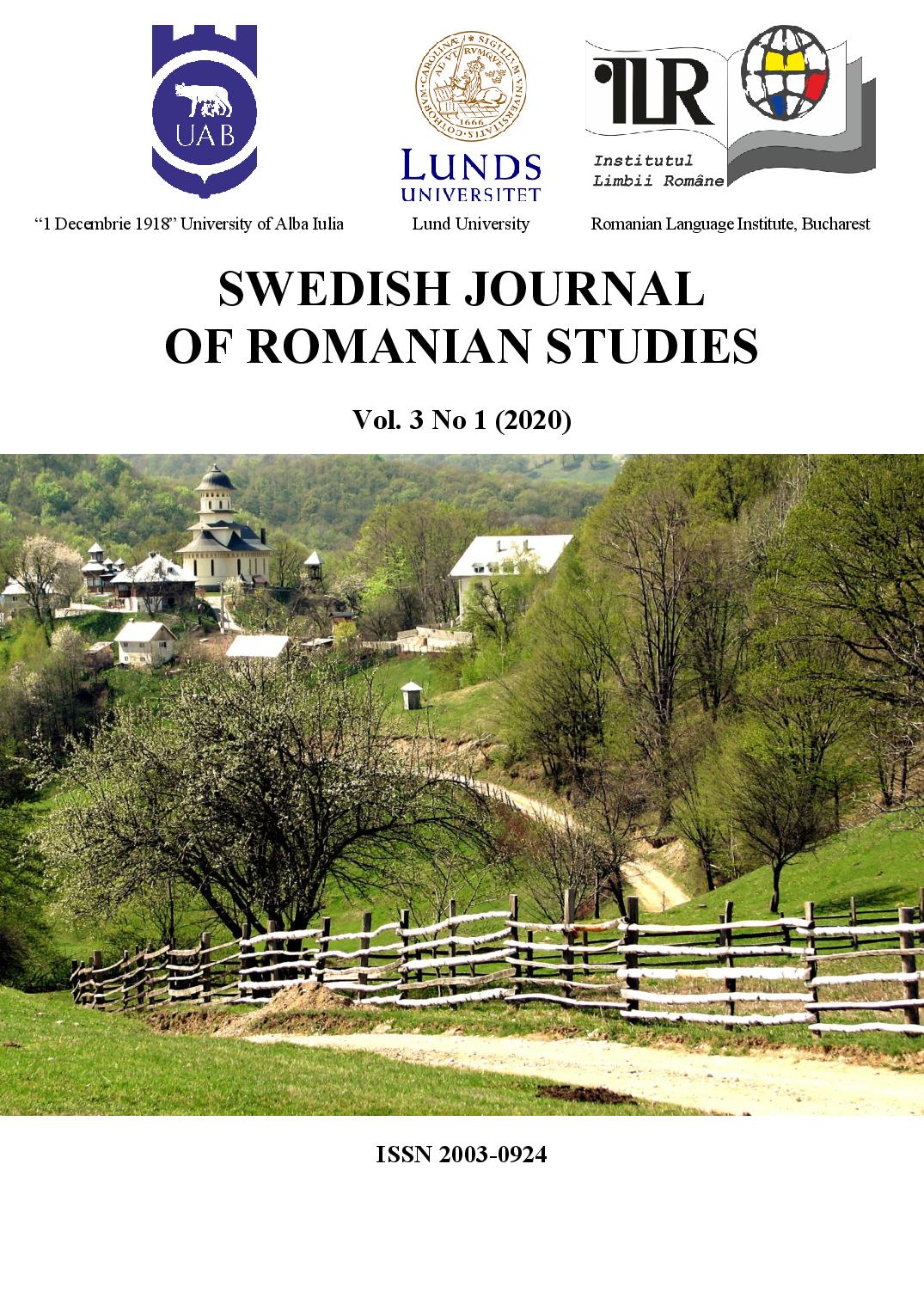Light and shadow as instruments of literary and visual metaphor in Liviu Rebreanu’s The Forest of the Hanged
DOI:
https://doi.org/10.35824/sjrs.v3i1.21424Nyckelord:
light and shadow; metaphor; literature; cinematography; theatre;Abstract
Starting from their basic role as elements of literary, cinematographic and theatrical description, light and shadow develop a close relation in all these three arts. They exceed their primary purpose and become involved in the process of narrating the events and setting the mise-en-scène. Even more, they are also engaged in changing the atmosphere, visualizing the images, modifying the reader’s or viewer’s attention, increasing or diminishing the dramatic intensity, conferring dynamic effect, accumulating meaning and revealing symbolic, philosophical, psychological and metaphysical significance to literary, cinematographic and theatrical artworks. Transferred from literature to cinematography and theatre, light and shadow have to adjust their means of expression so that to correspond to the specificity of each art. Taking after the techniques in the art of drawing, naming the tree-dimension perspective and chiaroscuro, light and shadow bring new aesthetic values to theatre and cinematography. Regarded as instruments of creating literary and visual metaphors, light and shadow highly influence the perception of the images outlined by them. The study aims to take into discussion the manner in which light and shadow may be employed as instruments of creating literary as well as visual metaphors. At the same time, it analyses the transposition of a metaphor generated by light and shadow from literature to cinematography and theatre as in Liviu Rebreanu’s “The Forest of the Hanged”.
Referenser
Blanchot, M. (2007). Spațiul literar/ Literary Space, trans. by Irina Mavrodin. București: Editura Minerva.
Brown, B. (2008). Motion Picture and Video Lighting. Oxford: Focal Press.
Buser, T. (2006). Experiencing Art Around Us. Belmont: Thomson Wadsworth.
Butler, A. (2005). Film Studies. Harpenden, Hertfordshire: Pocket Essentials.
Caragiale, I.L. (1981). Nuvele, povestiri, amintiri, varia/ Short Stories, Tales, Memoires, Varia. București: Editura Minerva.
Călinescu, G. (1985) Istoria literaturii române de la origini până în prezent/ The History of Romanian Literature from the Beginnings to Present, București: Minerva.
Gombrich, E H. (2000). Art and Illusion: A Study in the Psychology of Pictorial Representation. Princeton: Princeton University Press.
Herrstrom, D. (2017). Light as Experience and Imagination from Paleolithic to Roman Times. London: Fairleigh Dickinson University Press.
Krausse, A.C. (2005). The Story of Painting: From the Renaissance to the Present, Königswinter: Könemann.
Lăzărescu, G. (1983) Romanul de analiză pshihologică în literatura română interbelică/ The Novel of Psychological Analysis in the Interwar Romanian Literature, București: Minerva.
Poe, E.A. (1951). Great Tales and Poems of Edgar Allan Poe. New York: Washington Square Press.
Protopopescu, A. (1978). Romanul psihologic românesc/ The Romanian Psychological Novel, București: Editura Eminescu.
Rebreanu, L. (1989). Adam și Eva/ Adam and Eve. București: Editura Minerva.
Rebreanu, L. (1966). Pădurea spânzuraților/ The Forest of the Hanged. București: Editura pentru Literatură.
Ruskin, J. (2005). Modern Painters, volume 1. Whitefish: Kessinger Publishing.
Woolf, V. (1971). Jacob’s Room. London: Hogarth.
Online Resources
Figure 1 and Figure 2:
http://www.google.com/search?q=padurea+spanzuratilor+imagini&tbm=isch&source= univ&sa
Figure 3, Figure 4 and Figure 5:
http://www.google.com/search?q=filmul+apostol+bologa&tbm=isch&source=univ&sc= X&ved
Figure 6, Figure 7 and Figure 8:
http://www.google.com/search?q=padurea%20spanzuratilor%20imagini&tbm=isch&tbs =rimg
Downloads
Publicerad
Referera så här
Nummer
Sektion
Licens
Copyright (c) 2020 Carmen Dominte

Detta verk är licensierat under en Creative Commons Erkännande-IckeKommersiell 4.0 Internationell-licens.
Authors who publish with this journal agree to the following terms:
a. Authors retain copyright and grant the journal right of first publication with the work simultaneously licensed under a Creative Commons Attribution-NonCommercial 4.0 International License that allows others to share the work with an acknowledgement of the work's authorship and initial publication in this journal.
b. Authors are able to enter into separate, additional contractual arrangements for the non-exclusive distribution of the journal's published version of the work (e.g., post it to an institutional repository or publish it in a book), with an acknowledgement of its initial publication in this journal.
c. Authors are permitted and encouraged to post their work online (e.g., in institutional repositories or on their website) prior to and during the submission process, as it can lead to productive exchanges, as well as earlier and greater citation of published work (See The Effect of Open Access).

